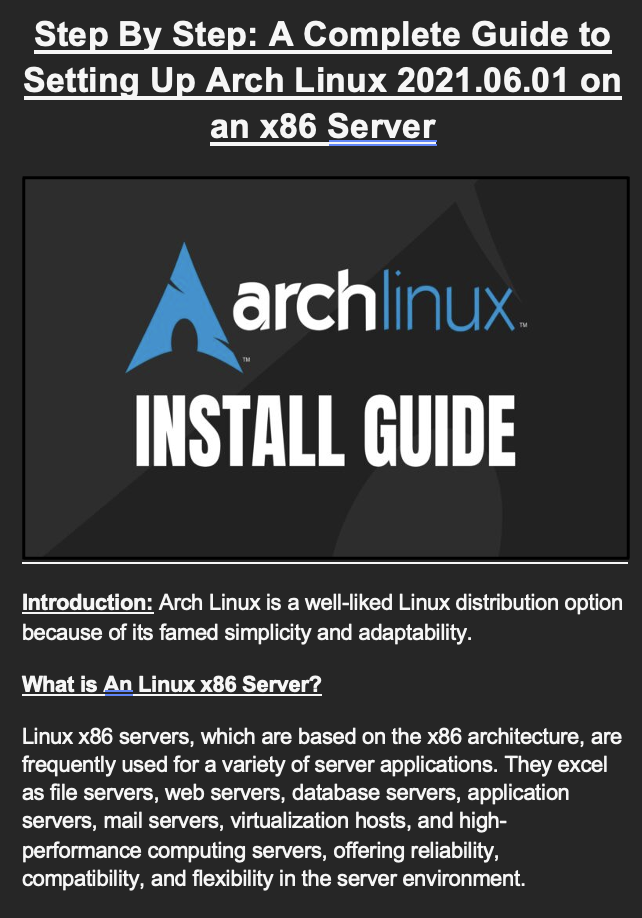Setting up Arc Linux 2021 (Grade A)
Summary:
The guide offers a detailed, step-by-step process for installing Arch Linux 2021.06.01 on an x86 server, a versatile platform known for its adaptability and wide range of applications, from web hosting to high-performance computing. The installation begins with gathering essential requirements, including an x86 server with compatible hardware, the Arch Linux ISO file, and a USB drive or CD/DVD for creating bootable media. Using software like Etcher or Rufus, the ISO file is turned into a bootable device. After rebooting the server and adjusting the BIOS/UEFI settings to prioritize the bootable media, the Arch Linux installation environment is launched. The guide emphasizes the importance of partitioning the server’s disk using tools like fdisk or cfdisk, followed by formatting the root partition with the ext4 filesystem and mounting it. The base system is then installed via the command line, equipping the server with all the necessary Arch Linux packages. The final steps involve system configuration tasks such as creating a “fstab file” for automated partition mounting, changing the root to access the newly installed system, setting the time zone, generating the system’s locale, and assigning a hostname. By meticulously following these steps, users can successfully install Arch Linux, benefiting from its flexibility and the robust community support that comes with it. This comprehensive guide serves as a valuable resource for anyone looking to explore the capabilities of Arch Linux on an x86 server.
Excerpt:
Setting up Arc Linux 2021
Step By Step: A Complete Guide to Setting Up Arch Linux 2021.06.01 on an x86 Server

Setting up Arc Linux 2021
Introduction: Arch Linux is a well-liked Linux distribution option because of its famed simplicity and adaptability.
What is A Linux x86 Server?
Linux x86 servers, which are based on the x86 architecture, are frequently used for various server applications. They excel as file servers, web servers, database servers, application servers, mail servers, virtualization hosts, and high-performance computing servers, offering reliability, compatibility, and flexibility in the server environment.


Reviews